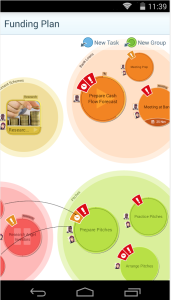You’re thinking oh yes, really, there is productivity to be learnt from the UK’s version of Dancing with the Stars? Yes.
Such as this. Right now as we speak, it’s the gap between the two episodes making up this year’s final. It’s about an hour, just shy of an hour, and it’s short enough and the timing is awkward enough that there isn’t a whole lot you can usefully go do before the show’s back.
But you could write.
I would be writing if I weren’t talking to you. So this is definitely a case of very specifically do what I say rather than what I do.
And this is what put the idea in my head. But once it was there in my noggin, I realised that there are productivity lessons aplenty.
Maybe it’s not a shock. Strictly runs for, what, 16 weeks? Once it starts, it is a train and there must be hundreds of people working flat-out on it. Every person vital – this is the BBC, they ain’t paying for people they don’t need – and that means everything they each do is crucial. Vital, crucial and time-dependent. Tina Fey has a great line that I remember a lot when I’m vacillating over projects I’m writing:
“The show doesn’t go on because it’s ready; it goes on because it’s 11:30.”
Tina Fey, Bossypants
We spend a lot of time as writers going around in circles over whether something is ready and whether something is good. Sometimes that is exactly the right thing to do. Sometimes that is what makes us writers and makes our material sing. But sometimes: let it go. It is done, get it gone.
I believe in debating what needs to be debated and finishing what needs to be finished. And the deadline of a live show every week is like cement-lined evidence to me.
But do you follow Strictly? I don’t watch The X-Factor because it seems the same every week to me. Someone comes on and they can sing or they can’t. Next week, they can sing or they can’t. No difference. With Strictly, people are visibly transformed. They’re transformed by many things but one is confidence: facing up to dancing in front of millions changes them. And always, always, when a celebrity’s personality comes out, they dance better.
Drama writing requires us to dig deep. Dancing requires letting go. But both require us to listen to the music and that’s productivity to me. Hear the rhythm, the beat and get going.
